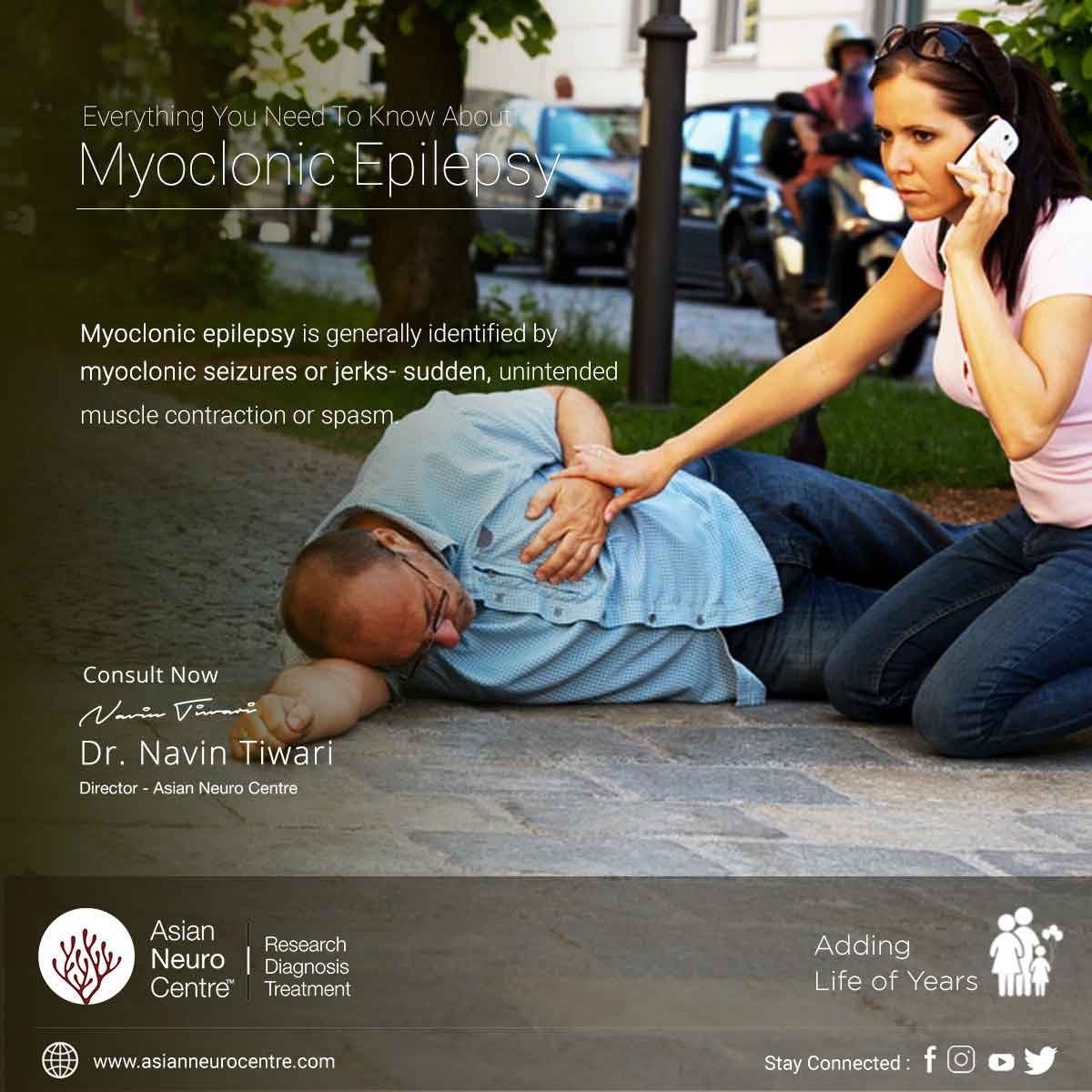- Have any questions?
- 911 12345 29
- info@asianneurocentre.com
Everything You Need To Know About Myoclonic Epilepsy

How Food And Exercise Affect People with Epilepsy? | Dr. Navin Tiwari
January 13, 2021
5 At-Home Remedies For Your Sciatica & Low Back Pain
January 25, 2021Everything You Need To Know About Myoclonic Epilepsy
- anti-seizure devices
- Asian Neuro Centre
- best doctor for epilepsy in indore
- Best doctor in indore
- Best Neurologist in Indore
- Brain Imaging
- diagnosis of myoclonic seizures
- Dr. Navin Tiwari
- eeg
- epilepsy surgery
- epileptic behaviors
- Juvenile Myoclonic Epilepsy
- juvenile myoclonic epilepsy treatment
- Ketogenic Diet
- Lumbar Puncture
- Myoclonic
- Myoclonic Epilepsy
- myoclonic epilepsy baby
- Myoclonic Epilepsy Symptoms
- Myoclonic Epilepsy Treatment
- myoclonic epilepsy treatment in indore
- myoclonic jerks.
- Myoclonic Seizures
- myoclonic seizures and brain damage
- natural treatment for myoclonic jerks
- Neurologist in Indore
- progressive myoclonic epilepsy
- Seizures
- Sleep-Deprived EEG
- treatment of myoclonic epilepsy
- which drug used in myoclonic seizures

Myoclonic epilepsy is generally identified by myoclonic seizures or jerks- sudden, unintended muscle contraction or spasm.
There are several types of myoclonic epilepsy, most often starting in childhood, caused by genetic factors, and can also lead to cognitive and developmental problems.
The treatment of myoclonic epilepsy depends upon the kind of seizures the patient is having, along with electroencephalogram (EEG) patterns. Although they can be treated with prescription anti-seizure medications, they are less likely to be fully controlled.
Symptoms
-
Myoclonic Jerks
Myoclonus, also known as myoclonic jerks, are quick, involuntary muscle contractions. In some cases, people often experience 1 or 2 myoclonic jerks during sleep without any succession to a seizure.
Myoclonus can also happen because of many spine or nerves related diseases. And sometimes they can happen just as a result of electrolyte or hormonal changes. In some cases, these jerks may occur only a few times in the whole life of the patient.
-
Myoclonic Seizures
Myoclonic seizures, on the other hand, tend to recur for years. It mostly happens during the childhood and young adulthood years.
Myoclonic seizures generally last for a few seconds and seem like a quick, abrupt and repetitive jerking movement involving an arm, a leg, or the face. These myoclonic seizure movements are characterized by quick, recurrent stiffness and relaxation. During these kinds of seizures, one may experience fewer voluntary movements of the body and a low level of consciousness.
Myoclonic seizures can be preceded by a feeling that a seizure is going to happen. After the seizure, one may feel tired or sleepy, although that will be not always.
Types and Causes
Myoclonic seizures are caused by unusual electrical activity in the brain, which leads to myoclonic jerks. In many cases, they are worsened by tiredness, alcohol, fevers, infections, photic (light) stimulation, or stress.

There are many kinds of myoclonic epilepsies and each of them has a different cause. But it’s a good thing that all the genetic factors related to myoclonic epilepsies have been identified.
Diagnosis & Treatment
The diagnosis of myoclonic seizures starts with describing the seizures. If you tell the doctor about having repetitive jerking movements, with or without consciousness, you’re likely going to go through various tests to determine the type of epilepsy you are having.
After that doctor will try to determine the causes behind that epileptic behavior by conducting various tests such as blood tests and genetic tests. Other tests in the diagnosis of myoclonic epilepsy may involve Brain Imaging, Lumbar Puncture, EEG, and Sleep-Deprived EEG.
Since myoclonic seizures are very short in duration and only rarely succeed to convulsive status epilepticus, thus they do not require emergency intervention.
Most of the treatments include the Ketogenic Diet, epilepsy surgery, and anti-seizure devices such as the vagal nerve stimulator. Generally, for severe epileptic behaviors, a combination of treatment procedures will be needed.
No matter how short they are, these seizures can be very scary. And taking measures to prevent them will go a long way in helping you and your family to feel more in control.
It would be wise to not sleep on high-level platforms like bunk beds. Always set a reminder for your child or yourself to take medication on time and remind them to go to bed, so they can get proper rest.
Asian Neuro Centre is one of the largest and most experienced practices in Indore where the best & experienced neurologist is skilled in dozens of specialties, working to ensure quality care and successful recovery.
Dr. Navin Tiwari
Consulting Neurologist
